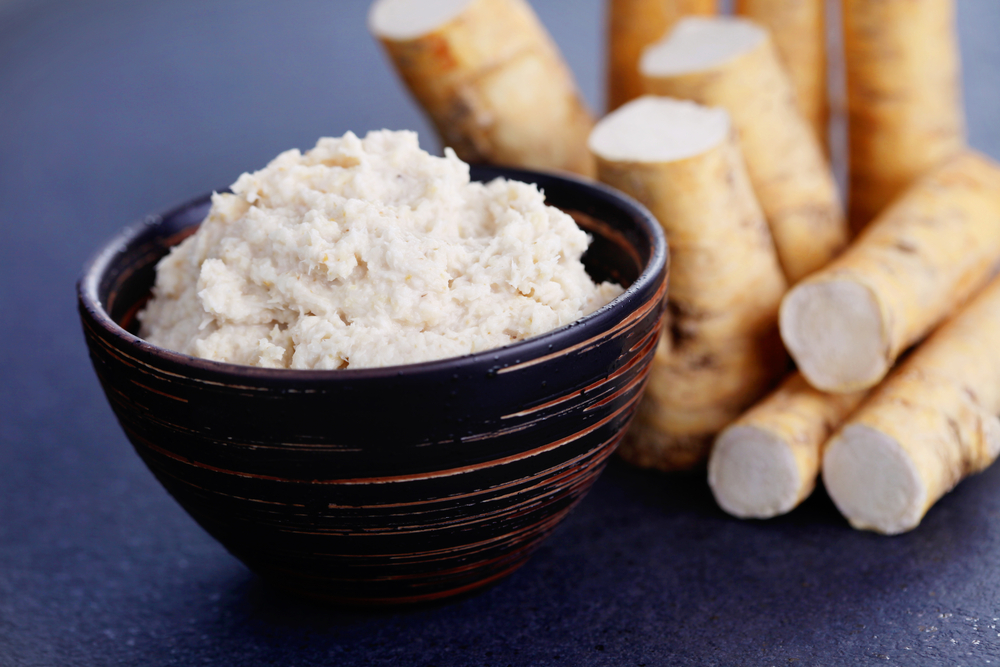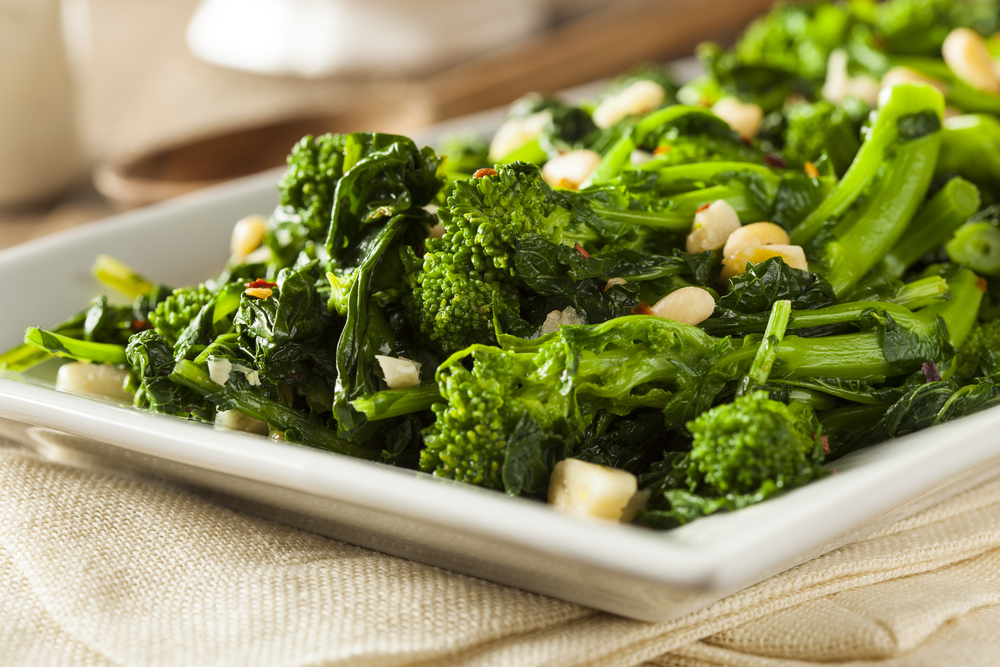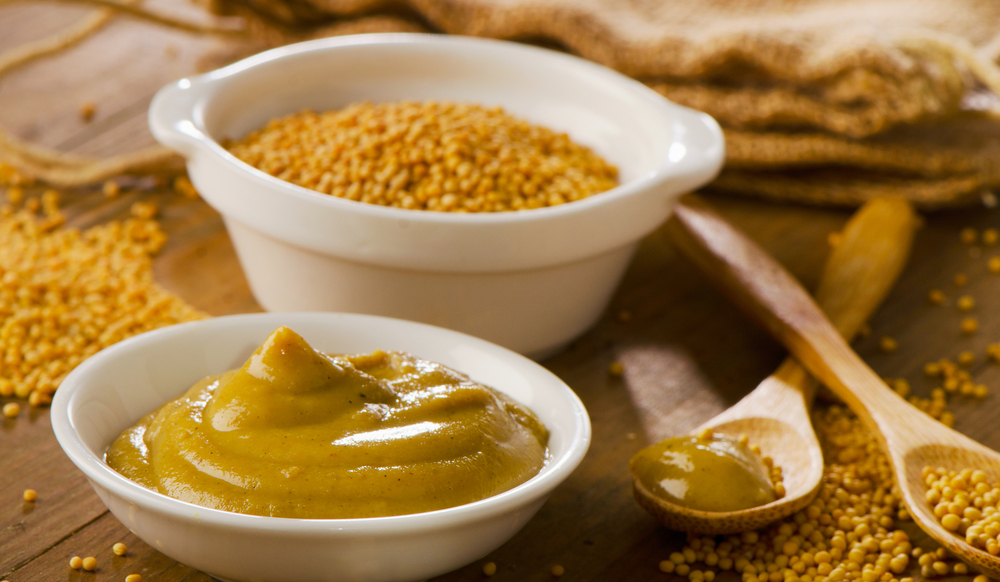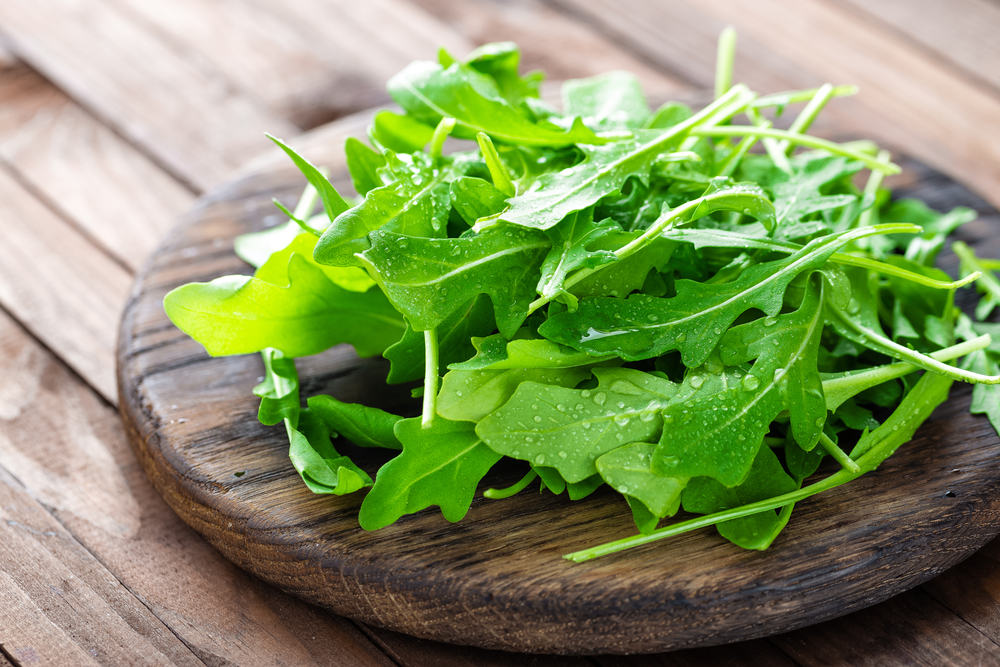As a leafy green vegetable, watercress is known for its unique taste and health benefits. Many people are curious about the taste profile of watercress and how it compares to other leafy greens.
In this article, I will explore what watercress tastes like, its nutritional value, health benefits, and culinary uses.
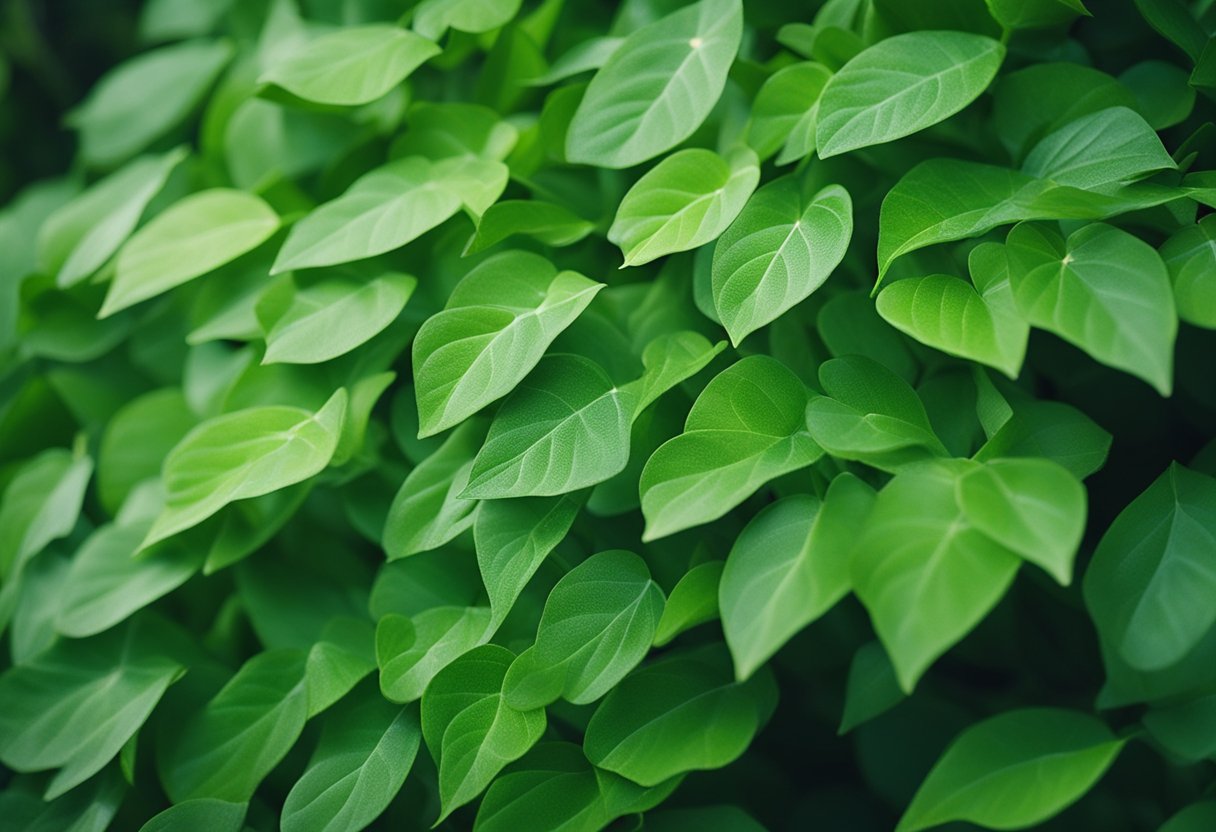
Watercress has a peppery taste with a slightly bitter undertone. It has a refreshing and bright flavor that is reminiscent of other greens like arugula, mustard greens, and broccoli rabe.
Some people describe the taste as having a hint of wasabi or horseradish. The taste of watercress can vary depending on the maturity of the plant and how it is prepared.
Despite its unique taste, watercress is a nutrient-dense vegetable that is packed with vitamins and minerals. It is low in calories and high in antioxidants, making it a great addition to any healthy diet.
Watercress is also known for its potential health benefits, including reducing inflammation, improving digestion, and boosting immune function.
Key Takeaways
- Watercress has a peppery taste with a slightly bitter undertone, similar to other greens like arugula and mustard greens.
- Watercress is a nutrient-dense vegetable that is low in calories and high in antioxidants.
- Watercress has potential health benefits, including reducing inflammation and improving digestion.
Understanding Watercress
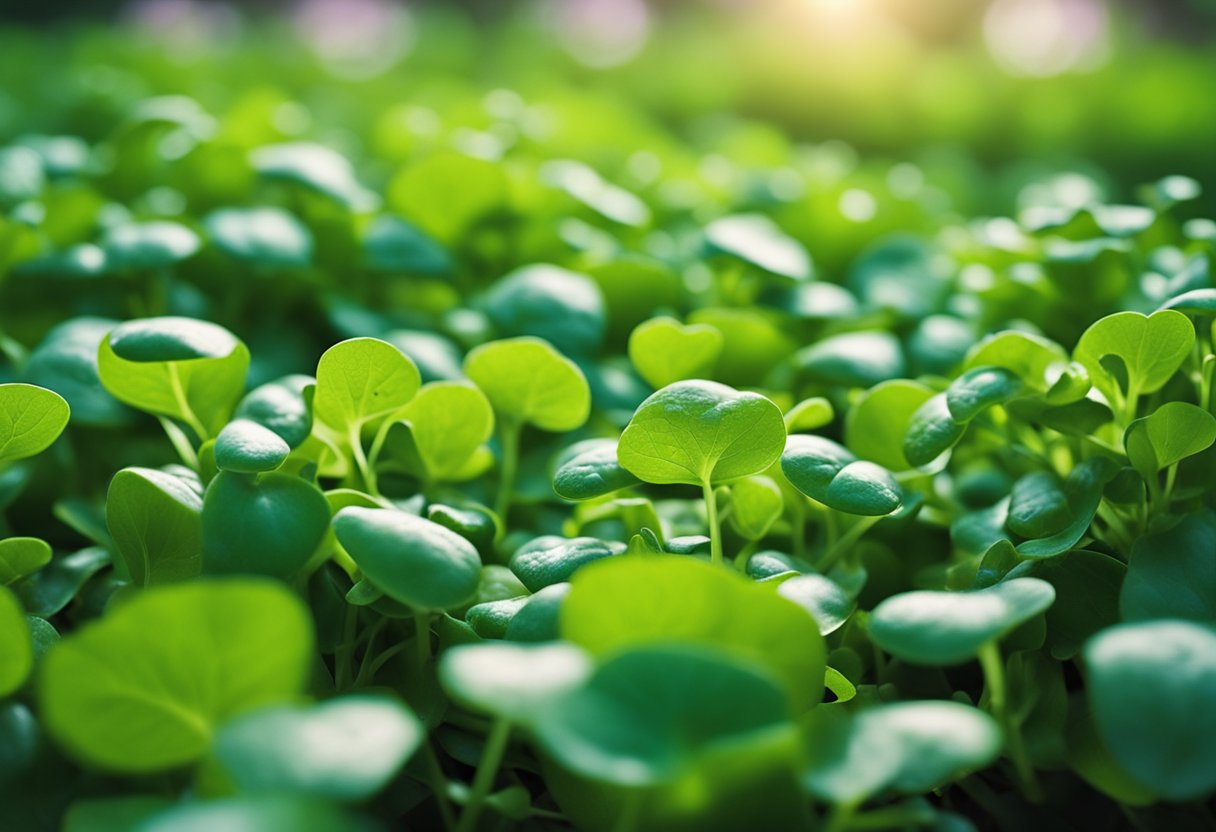
As a leafy green vegetable, watercress is a popular ingredient in many dishes, especially salads. It is an aquatic plant that grows in shallow water and has a unique, peppery taste that sets it apart from other leafy greens.
Watercress is a member of the Brassicaceae family and is related to other vegetables such as mustard greens and wasabi. The leaves of the watercress plant are small and oval-shaped with a dark green color. They grow on thin stems that can reach up to 20 inches in length.
One of the unique characteristics of watercress is that it is an edible aquatic plant. It is grown in shallow water and is harvested by hand. The leaves and stems of the plant are both edible and can be eaten raw or cooked.
When eaten raw, watercress has a bright and fresh taste with a somewhat peppery flavor. However, as the plant matures, it can become slightly bitter. Cooking watercress can reduce its pungency, making it a milder addition to dishes.
Watercress is a highly nutritious vegetable that is rich in vitamins and minerals. It is an excellent source of vitamin C, vitamin K, and calcium. Additionally, it is packed with antioxidants that help reduce inflammation and oxidative stress in the body.
In summary, watercress is a leafy green vegetable with a unique, peppery taste that is grown in shallow water. It is an edible aquatic plant that is highly nutritious and can be eaten raw or cooked.
Its bright and fresh taste makes it a popular ingredient in salads, while its milder flavor when cooked makes it a great addition to soups and stews.
Taste Profile of Watercress
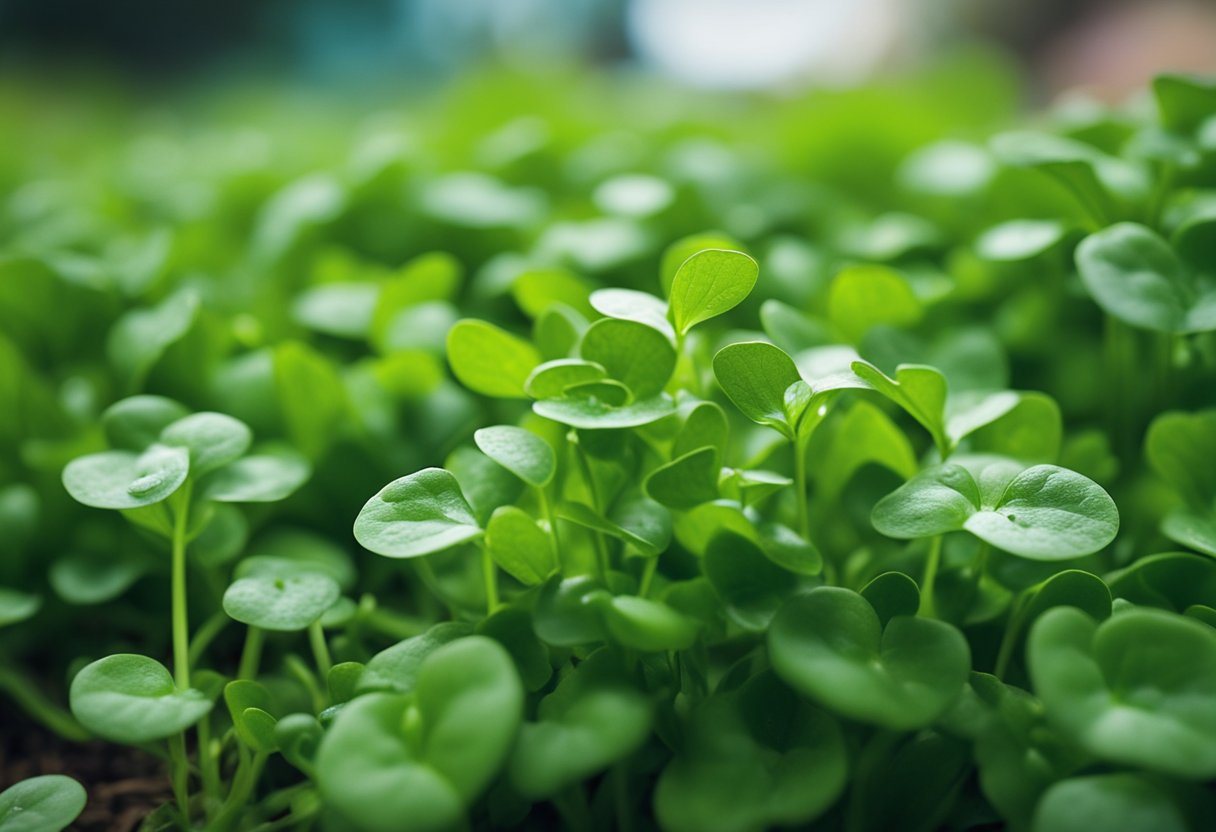
Watercress is a leafy green vegetable that has a unique taste. As I bite into the raw leaves, I can taste a bright and fresh flavor that is slightly bitter. The taste is similar to mustard greens and radish, but with a peppery flavor that gives it a tangy kick.
When watercress matures, it can become slightly bitter, which may not be as appealing to some people. However, its peppery flavor is still present, and it can add a unique taste to salads, soups, and sandwiches.
Cooking watercress can change its taste profile. The leafy green loses some of its pungency when cooked, but it still retains its peppery flavor. When added to soups, stews, and sauces, watercress can add a unique flavor that complements other ingredients.
Due to its delicate nature, watercress is often sold in small bunches and should be used within a few days of purchase. Its bold, spicy flavor is similar to arugula but with a slightly bitter aftertaste.
In summary, watercress has a bright and fresh taste with a peppery flavor that can be slightly bitter. Its unique taste profile makes it a great addition to salads, soups, and sandwiches. When cooked, it adds a unique flavor to dishes that complements other ingredients.
Nutritional Value of Watercress
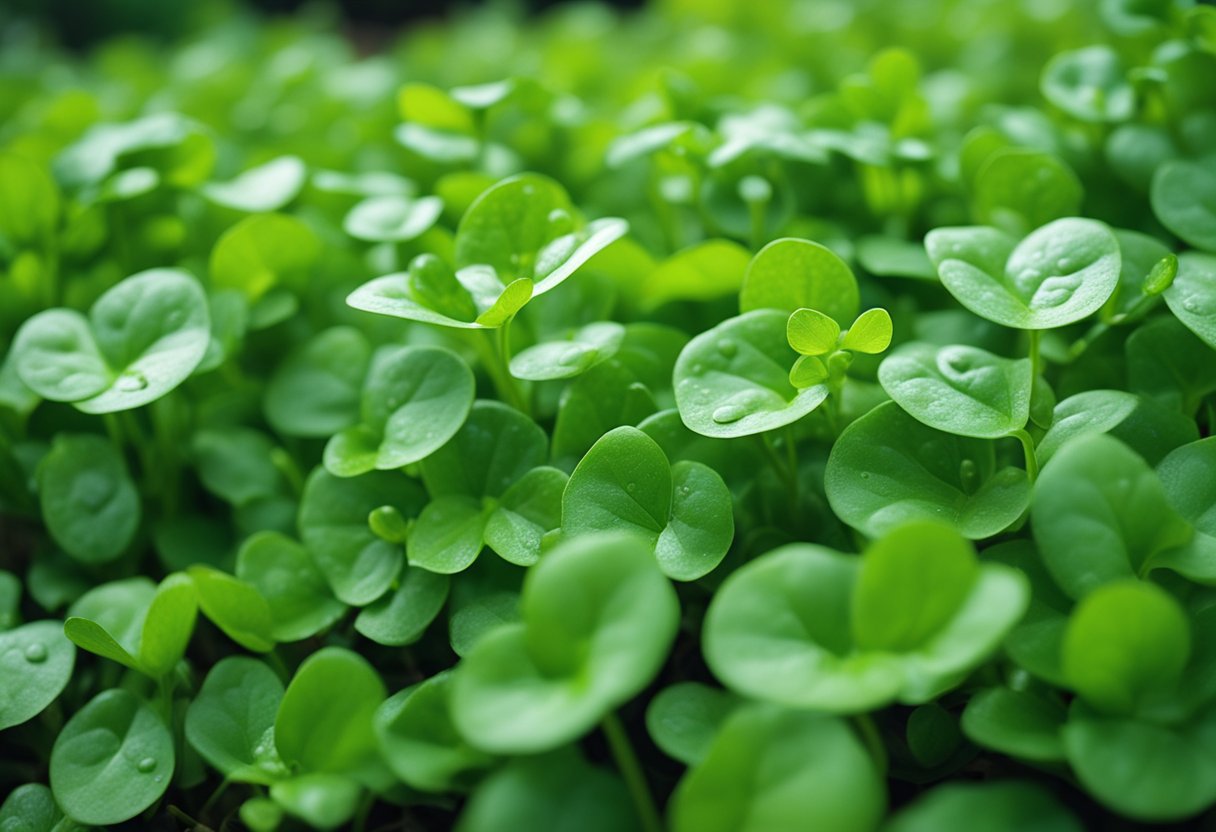
As a leafy green vegetable, watercress is a nutrient-dense food that is low in calories and high in vitamins and minerals. Watercress is packed with a variety of nutrients that can provide numerous health benefits.
Vitamins
Watercress is an excellent source of vitamins A, C, and K. One cup of watercress contains over 100% of the recommended daily intake of vitamin K, which is essential for blood clotting and bone health.
Vitamin A is important for vision, immune function, and skin health, while vitamin C is a powerful antioxidant that helps protect cells from damage.
Minerals
Watercress is also rich in minerals, including calcium, potassium, iron, and folate. Calcium is essential for bone health, while potassium helps regulate blood pressure and fluid balance in the body. Iron is important for the production of red blood cells, and folate is essential for fetal development during pregnancy.
Antioxidants
Watercress contains a variety of antioxidants, including beta-carotene, lutein, and zeaxanthin. These antioxidants help protect cells from damage caused by free radicals, which can contribute to chronic diseases such as cancer and heart disease.
Fiber
Watercress is also a good source of fiber, which is important for digestive health and can help lower cholesterol levels. One cup of watercress contains about 0.2 grams of fiber.
Overall, watercress is a nutrient-packed vegetable that can provide numerous health benefits. Incorporating watercress into your diet can help you meet your daily nutrient needs and improve your overall health.
Health Benefits of Watercress
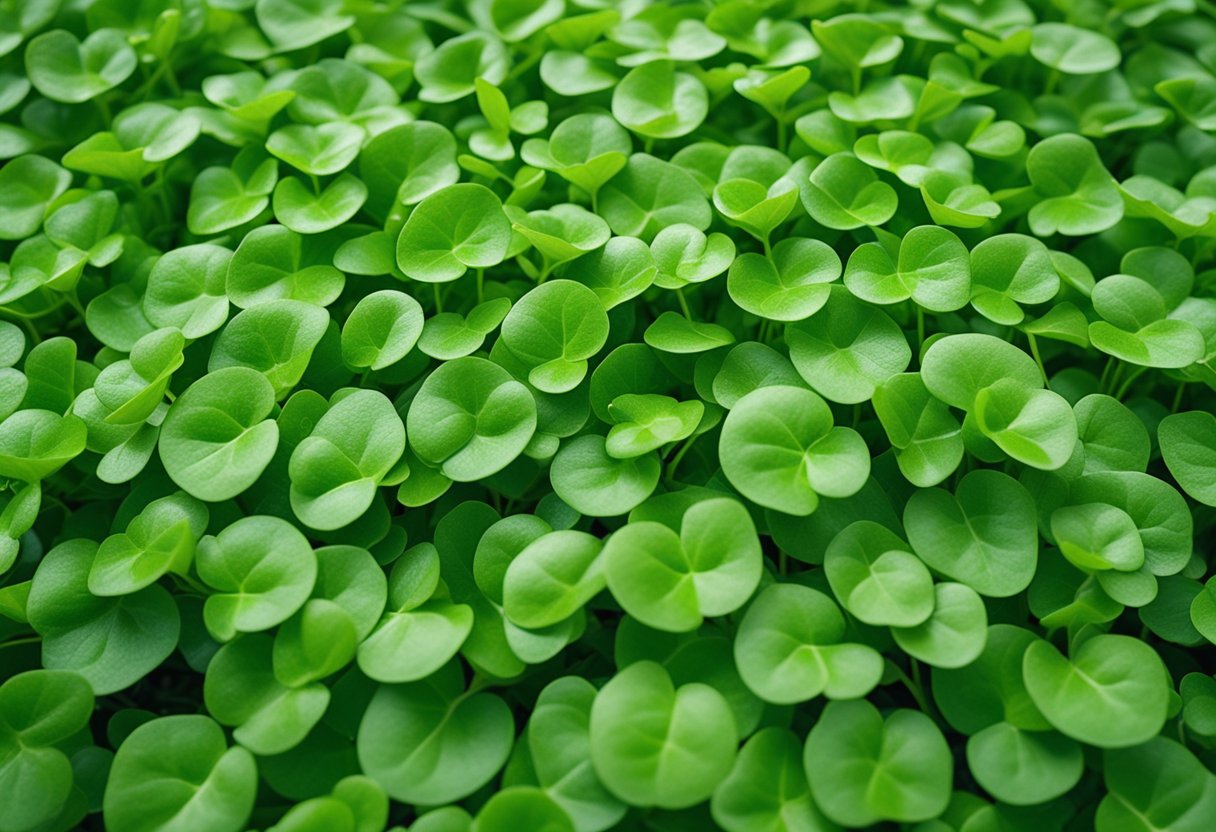
I have always been fascinated by the health benefits of different foods, and watercress is no exception. This leafy green vegetable is packed with nutrients and is a great addition to any diet. Here are some of the health benefits of consuming watercress:
1. Packed with Nutrients
Watercress is low in calories but packs a vast array of nutrients. It is rich in vitamins A, C, and K, and also contains calcium, iron, and magnesium. It is also a good source of antioxidants, which can help protect your cells from damage caused by free radicals.
2. May Lower Your Risk of Chronic Diseases
Watercress is packed with plant compounds called polyphenols, which have been shown to have anti-inflammatory and antioxidant properties. Since it’s packed with powerful antioxidants, watercress could help lower your risk of chronic illnesses like heart disease, diabetes, and cancer.
3. Good for Bone Health
Watercress is an excellent source of vitamin K, which is important for bone health. Vitamin K helps to activate proteins that are involved in bone mineralization, which can help prevent osteoporosis.
4. Good for Blood Health
Watercress is also a good source of iron, which is important for healthy blood. Iron is necessary for the production of hemoglobin, which carries oxygen to your body’s tissues.
5. May Aid in Weight Loss
Watercress is low in calories and high in fiber, which can help you feel full and satisfied. This can make it easier to stick to a healthy diet and may aid in weight loss.
6. Boosts Your Immune System
The vegetable’s high vitamin C content gives your immune system a necessary boost during cold and flu season. Vitamin C is an essential nutrient that helps support the immune system and can help reduce the duration and severity of colds and other respiratory infections.
In conclusion, watercress is a nutrient-dense vegetable that offers a wide range of health benefits. Adding it to your diet can help improve your overall health and well-being.
Culinary Uses of Watercress
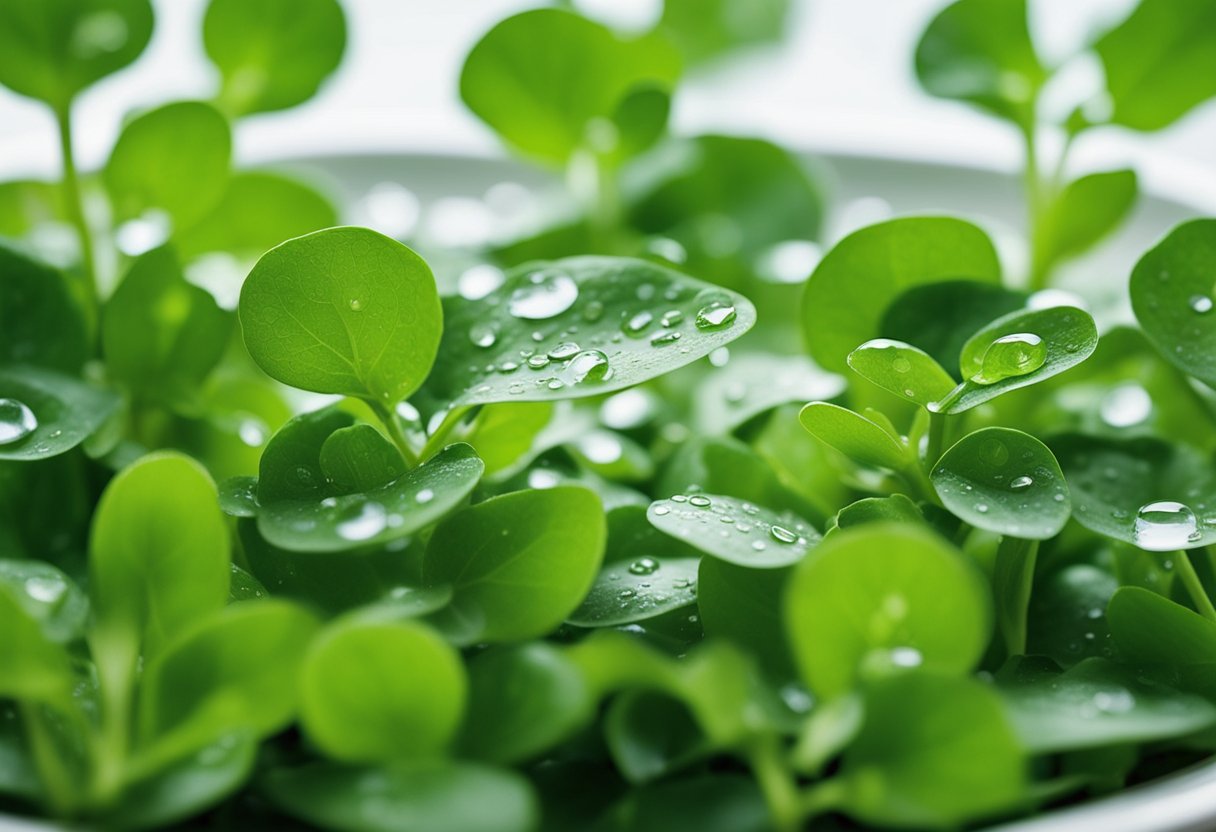
Watercress is a versatile and flavorful leafy green that can be used in a variety of culinary applications. It has a spicy and slightly bitter taste, which makes it a great addition to salads, soups, and sandwiches. Here are some of the most popular culinary uses of watercress:
Salads
Watercress is a popular ingredient in salads due to its refreshing and peppery taste. It pairs well with milder greens like spinach and arugula, as well as with fruits like apples and pears.
To make a delicious watercress salad, simply combine it with your favorite ingredients and dress it with a vinaigrette or a creamy dressing.
Soups and Stews
Watercress is a great addition to soups and stews, as it adds a spicy and flavorful kick to the dish. It can be used in both hot and cold soups, and pairs well with ingredients like potatoes, carrots, and leeks.
To use watercress in soups and stews, simply add it towards the end of the cooking process to preserve its flavor and texture.
Sandwiches
Watercress can also be used as a filling for sandwiches, either on its own or combined with other ingredients like bacon, avocado, and tomato. It adds a spicy and crunchy texture to the sandwich, and pairs well with both meat and vegetarian fillings.
Sauté and Stir-fries
Watercress can be sautéed or stir-fried with other ingredients like garlic, ginger, and soy sauce to create a flavorful and nutritious side dish. It can also be used as a garnish for meat dishes like steak and chicken, or added to pasta dishes for an extra burst of flavor.
Superfood
Watercress is considered a superfood due to its high nutritional content. It is rich in vitamins A, C, and K, as well as minerals like calcium and iron. It is also a great source of antioxidants and anti-inflammatory compounds, which can help boost the immune system and prevent chronic diseases.
Substitute
Watercress can be used as a substitute for other leafy greens like kale and spinach in recipes. It has a similar texture and flavor profile, and can be used in the same way as these greens.
Where to Buy
Watercress can be found at most grocery stores and farmers markets, especially during its peak season from April to June. Look for watercress with healthy green leaves and a fresh, spicy scent.
Overall, watercress is a delicious and flavorful leafy green that can be used in a variety of culinary applications. Whether you’re making a salad, soup, or sandwich, or sautéing it as a side dish, watercress is a versatile and nutritious ingredient that can elevate any meal.
Storage and Selection of Watercress
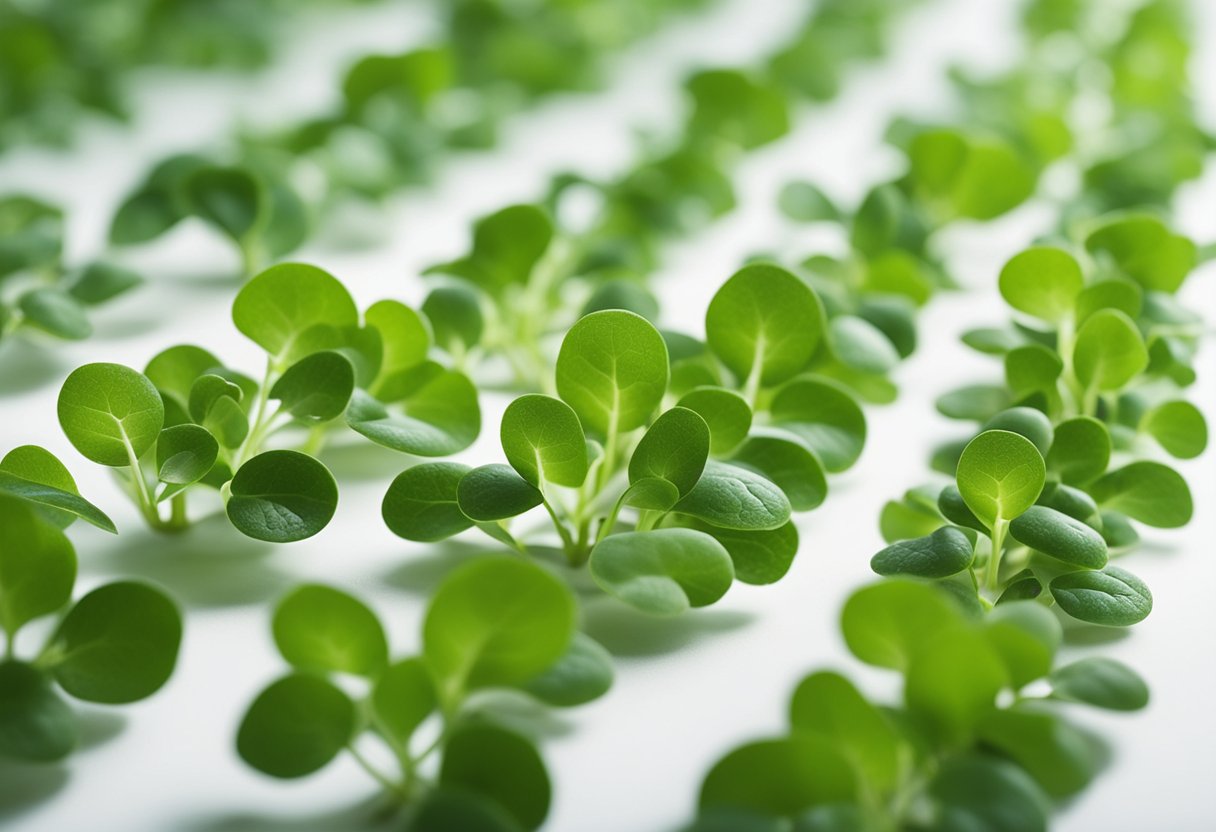
As a leafy green vegetable, watercress needs to be stored properly to ensure its freshness and quality. Here are some tips on how to select and store watercress:
- Selection: When selecting watercress, look for bright green leaves that are firm and crisp to the touch. Avoid any bunches that have yellow or brown leaves, as this is a sign of decay. Also, check the stems for sliminess, as this is another indication that the watercress is no longer fresh.
- Storage: To store watercress, first rinse it thoroughly under cold running water to remove any dirt or debris. Then, shake off any excess water and wrap the watercress in a damp paper towel. Place the wrapped watercress in a plastic bag and store it in the refrigerator. Watercress can last for up to five days when stored this way.
- Cool Temperature: Watercress is a delicate vegetable that is best stored at a cool temperature. The ideal temperature for storing watercress is between 32 and 40 degrees Fahrenheit. If you store watercress at a warmer temperature, it will wilt and lose its crispness.
- Streams: Watercress is often grown in streams or other bodies of water, which can make it difficult to remove any dirt or debris. To clean watercress that has been grown in a stream, fill a large bowl with cold water and add the watercress. Swirl the watercress around in the water to remove any dirt or debris, then lift the watercress out of the water and shake off any excess moisture.
- Soldiers: Watercress has a long history of being used as a food source by soldiers in the field. Its high vitamin C content made it a valuable food during long campaigns. Today, watercress is still a popular ingredient in salads and other dishes.
In conclusion, watercress is a nutritious and flavorful leafy green vegetable that can be stored for up to five days when stored properly. By following these tips for selecting and storing watercress, you can ensure that your watercress stays fresh and crisp for all your culinary needs.
Comparisons to Other Leafy Greens
As someone who has tasted watercress, I can confidently say that its flavor is unique and distinct from other leafy greens. However, it is often compared to other greens such as mustard greens, arugula, and kale.
Mustard greens have a similar peppery taste to watercress, but the latter has a milder flavor. Arugula, on the other hand, has a more intense and bitter taste compared to watercress.
Kale and spinach are milder in flavor than watercress, but they have a similar texture. Cabbage, broccoli, and cauliflower are not as spicy as watercress and have a more subtle flavor.
When it comes to salads, watercress is a great addition as it adds a refreshing and tangy flavor that complements other greens. It is often used in salads alongside milder-tasting greens such as lettuce or spinach.
In terms of cooking, watercress can be used in soups, stews, and sauces. When cooked, it loses some of its pungency and adds a unique flavor to dishes. It is important to note that watercress should be used within a few days of purchase, as it has a short shelf life.
Overall, while watercress can be compared to other leafy greens in terms of taste, it has a unique flavor that sets it apart from the rest.
Watercress in History
Watercress has a long history of being used for both culinary and medicinal purposes. The ancient Greeks, Romans, and Persians all recognized the value of watercress as a food and medicine. In fact, Hippocrates, the father of modern medicine, was known to prescribe watercress to his patients for its health benefits.
During the Victorian era, watercress became a popular food in England, where it was grown in abundance in the chalk streams of Hampshire. It was often sold by street vendors, who would carry it in baskets on their heads and sell it to passersby.
The Victorians believed that watercress was a “superfood” that could cure a wide range of ailments, from scurvy to tuberculosis.
Today, watercress is still widely used in cooking, particularly in salads and soups. It has a peppery flavor that is often compared to arugula or mustard greens, and it can add a unique flavor to any dish.
Watercress is also packed with vitamins and minerals, including vitamin C, vitamin K, calcium, and iron, making it a nutritious addition to any diet.
Overall, watercress has a rich history and continues to be a popular food today. Its unique flavor and health benefits make it a versatile ingredient that can be used in a wide range of dishes.
Frequently Asked Questions
What are the benefits of eating watercress?
Watercress is a highly nutritious leafy green vegetable that is packed with vitamins and minerals. It is a good source of vitamin C, vitamin K, vitamin A, calcium, iron, and folate.
Eating watercress has been linked to a variety of health benefits, including improved digestion, reduced inflammation, and lower risk of chronic diseases such as heart disease and cancer.
What are some popular watercress recipes?
Watercress can be used in a variety of recipes, both raw and cooked. Some popular watercress recipes include watercress soup, watercress salad, watercress pesto, and watercress sandwiches. It can also be used as a garnish for dishes such as omelets, quiches, and pasta dishes.
How does watercress differ from arugula in taste?
Watercress has a slightly peppery taste that is similar to arugula, but it is generally considered to be milder and less bitter. Arugula has a stronger, more pungent flavor that some people find overwhelming.
Is watercress considered a bitter herb?
Watercress is not considered a bitter herb, although it can become slightly bitter when it is mature. The bitterness is generally mild and is balanced by the vegetable’s bright and fresh taste.
Can watercress be eaten raw?
Yes, watercress can be eaten raw. In fact, it is often used in salads and sandwiches for its fresh and peppery flavor. When eaten raw, watercress has a crisp texture and a bright green color.
What are some foods that pair well with watercress?
Watercress pairs well with a variety of foods, including citrus fruits, berries, nuts, and cheese. It is also commonly used in sandwiches and salads with other vegetables such as tomatoes, cucumbers, and avocados. Additionally, watercress can be used as a garnish for soups, stews, and other savory dishes.


